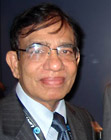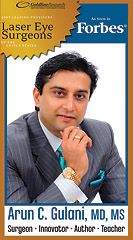
ALCOHOL AND HEALTH: Link to medical problems – Part III

A new exhibit at the Royal College of Physicians in London, “Alcohol – The Bewitching Poison,” explores 300 years of drinking history, its ravages on human health and societal implications. Currently, the United Kingdom is urging sobriety: a move towards healthier drinking habits. And so should we.
A common misconception is that excessive drinking is associated only with liver problems such as alcoholic hepatitis and cirrhosis of liver. However, many diseases can result from heavy alcohol consumption. The National Institute of Alcohol Abuse and Alcoholism (NIAAA) estimates that the prevalence of alcohol dependence in the United States is 5 percent, but up to 3 out of every 10 adults drink alcohol at levels associated with adverse health and social consequences. That may be surprising to many but we need to accept the facts and modify our behavior. Many clinicians also fail to recognize the symptoms of chronic alcoholism and don’t provide alcohol-related screening and intervention for eligible patients.
A heavy drinking episode can lead to alcohol poisoning. College students are often admitted to the hospital after alcoholic debauchery, a dangerous activity that can be fatal. Many show up at the emergency room with blood alcohol concentration levels of up to 0.25 (the legal limit or the limit for intoxication being 0.08 g/dL or lower). High alcohol levels suppress brain function and may lead to loss of consciousness, low blood pressure, hypothermia, coma and depression of respiration.
During some of public social functions, I have seen respectable guests looking a little drunk with slurred speech and unsteady gait. When they get behind the wheel to drive home the stage is set for accidents and DUI arrests. The statistics say that in 2011, 9,878 people were killed in alcohol-impaired-driving crashes. Those accounted for 31 percent of the total motor vehicle traffic deaths in the United States. Frightening, isn’t it? Especially when you think these are entirely preventable deaths.
The common medical problems associated with heavy alcohol use include high blood pressure, weakness of heart muscle with loss of its pumping ability called cardiomyopathy, pancreatic disorders, stomach ulcers, cardiac arrhythmias and more. Recurrent inflammation of pancreas often leads to diabetes mellitus and continued alcohol usage complicates its treatment as well. Various types of cancers, including liver, mouth, throat, larynx, esophagus and probably breast and colon can also occur in alcohol users. Often chronic alcoholism can lead to seizures and strokes, so beware. In addition, alcohol abusers tend to suffer from more complications such as bleeding and infections after a major surgery. Many alcoholics also have poor nutritional status and may develop deficiencies of vitamins and minerals in the body.
A host of mental and social health issues are associated with chronic drinking. A common cause for domestic violence in any country is alcoholism in one of the spouses, usually the husband. In India, it is common for many middle and upper class men to go to clubs, play cards with their colleagues while downing several drinks and coming home intoxicated. The average day worker (again males almost always) with poor income squanders his money in local “toddy or arrack” shops where home brewed spirits are served. Sometimes, such shops add cheap methanol to their brew to make up for volume, leading to catastrophic results including deaths.
Such alcohol-related tragedies are not uncommon in many states in India and occasionally happen in eastern countries like Indonesia and Thailand as well. Amid all these, the unfortunate wife has no choice other than tolerating her husband’s wayward behavior and watch silently the social and financial ruin of the household. Needless to say, children suffer the most in such families.
Because of all the alcohol-related risks in the society, the NIAAA recommends screening all patients annually to determine their level of alcohol use and to advise patients of the safe levels of alcohol consumption. There are many effective screening tools available for clinicians now to detect unhealthy alcohol usage. Effective treatment should be given once the patients are identified with at-risk or hazardous drinking. With good social support, motivation and counseling the likelihood of success – an abstinence of at least 50 percent at the end of one year – is high.
This series will conclude next month.
M.P. Ravindra Nathan, M.D., is a cardiologist and Emeritus Editor of AAPI Journal. His book “Stories from My Heart” was recently released. (www.amazon.com or www.bn.com.)
Eye Care
MIND YOUR EYES DURING DIWALI

Diwali brings to mind, a festival of lights, firecrackers and sweets galore. Here’s the bummer; all of them can affect vision adversely
Injury to eyes from firecrackers (direct burn or missile trauma) or lighted decorations (electrical or burn) are well-known causes of blindness
The most common reasons for this unfortunate end result are:
- Poor technique of firecracker discharge (accidentally aimed at self or passerby)
- Improper discharge of firecrackers (delayed or wrong timing)
- Explosive firecrackers with surrounding heat and burn impact
- Lack of eye protection or improper protection
The various modes of eye trauma are:
- Impact — from flying chips, particles, debris, etc.
- Burns — from sparks, molten metal, or gases/chemical splashes
- Irritation — from chemical vapors or dust
- Effects of heat — from direct fire or indirect high temperature surfaces
Few things that I think make us more susceptible to burns and trauma during Diwali are:
- The clothes we wear are usually of materials that can catch fire easily . In many women’s fashions they are flowing and long.
- Mood of people is usually all fun and careless in many cases
- Alcohol may be involved in decreasing reaction time to danger
Do your due diligence in buying firecrackers from proper stores, and make sure to supervise children all the time. Make sure the surroundings are clear of people, and no one lights fireworks near each other but wait their turns (this also ensures enjoying the nice displays instead of rushing them). Make some ground rules before you begin.
If an incident does occur, then depending on individual circumstances, the first action to any foreign body in the eye is to flush with water as soon as possible. Do not rub the eye, do not probe or explore but call 911 immediately. Remove the victim and other potential victims from danger zone.
You thought I forgot about the third element, sweets? Well, remember excessive sweets in predisposed people leads to diabetes and that can affect the eye adversely.
Now that we have done our due diligence, put on your best new clothes, take a mouthful of ladoos and get together with firecrackers to make some noise.
Happy Diwali!
Arun C. Guliani M.D., M.S. is director and chief surgeon of Gulani Vision Institute in Jacksonville. He can be reached at gulaini[email protected] or by visiting www.gulanivision.com.